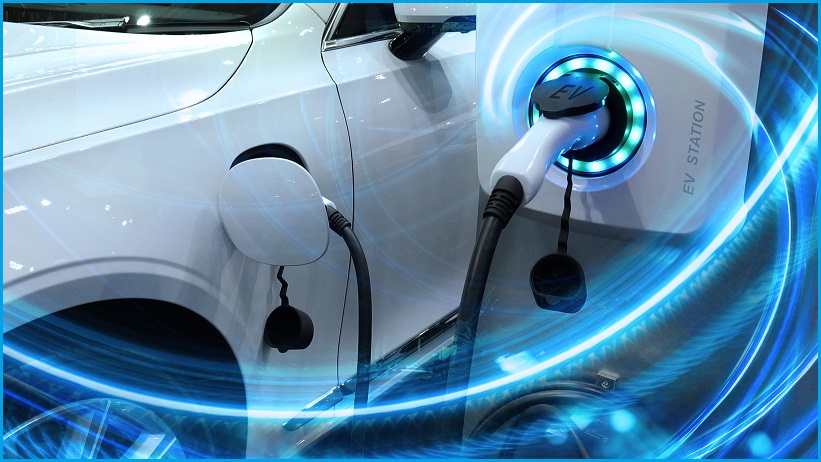The Morrison government has argued that its new electric-vehicle (EV) policy will cut over 8 million tonnes of carbon emissions by 2035, but EV advocates have labelled the policy a “fizzer” that ignores meaningful change for tokenistic initiatives like buying 50,000 EV household charging stations.
Announced in the waning days of the United Nations COP26 Climate Change Conference, the government’s long-fomenting Future Fuels and Vehicles Strategy (FFVS) is based around four key areas of investment including public electric vehicle charging and hydrogen refuelling infrastructure; heavy and long-distance vehicle technologies; commercial fleets; and household smart charging.
The $250 million fund, which has been topped up with $178m in new funding, has been billed as a “technology-led approach to reducing emissions in the transport sector”.
“We will not be forcing Australians out of the car they want to drive or penalising those who can least afford it through bans or taxes,” Prime Minister Scott Morrison said in announcing the funding, which would focus on “creating the right environment for industry co-investment in technology development.”
And while the policy includes sweeteners such as the funding of 50,000 charging stations to be installed in Australian homes – as well as 1,000 charging stations for public use and 400 for businesses – industry advocates have slammed it for its lack of incentives or rebates to encourage Australians to actually buy EVs.
“There’s no sugar coating it,” Electric Vehicle Council (EVC) CEO Behyad Jafari said after the new policy was announced. “Future Fuels is a fizzer.”
One key shortcoming, industry figures agree, is the policy’s lack of enforceable emissions standards, which are being used overseas to pressure car makers to pursue emissions-reduction targets.
A recent Grattan Institute study recommended that a “carefully designed emissions ceiling for new light vehicles” could reduce car emissions that currently account for 11 per cent of Australia’s carbon emissions.
“If [FFVS] contained fuel efficiency standards and rebates it would give Australians more choice,” Jafari said. “The best and most affordable EV manufacturers are producing would make their way swiftly onto our market.”
Yet by failing to set fuel efficiency standards that would incentivise car makers to bring more-efficient vehicles to Australian shores, Jafari said, FFVS ensures that “Australia will continue to be a dumping ground for the world’s dirtiest vehicles.”
Too little, too late?
The policy comes in the wake of private-sector companies’ doubling down on commitments to build out EV charging infrastructure – including a recent announcement by Ampol that it will install EV charging bays at over 100 retail sites, a 42-strong highway network by Evie Networks, 500-strong Chargefox network; startup Bell resources’ 63-site network; and others.
Yet even as charging infrastructure steadily expands, EV sales remain just a fraction of their adoption overseas – with just 8,688 EVs sold in Australia during the first half of this year.
During 2020, just 0.78 per cent of all vehicles sold were EVs – but this may change rapidly as manufacturers’ increasing selection boost the number of EV models from 31 in August to 58 by year’s end.
Australia is on track to have 50 per cent electric vehicles by 2030, according to some calculations – but just how to drive that adoption remains a point of contention, with state authorities stepping in to fill the policy void.
The ACT, for example, will make registration free for EVs while NSW has floated ambitious plans to electrify its government fleet by 2030 and promising a $3,000 rebate and stamp-duty savings for EV purchases.
Yet Australia is still a long way from more-progressive policies such as the UK’s planned ban on hybrid, petrol and diesel cars by 2035.
Instead, Minister for Industry, Energy and Emissions Reduction Angus Taylor said, the FFVS would stay focused on infrastructure investments and allow the market to sort itself out in the long term.
“Voluntary adoption of electric vehicles is the right pathway for reducing transport emissions over the long term,” he said. “Stringent standards, bans or regressive taxes will limit choice and increase the upfront costs of cars for Australians.”
The first round of Future Fuels Fund recognised initiatives such as a commitment to build 403 EV fast-charging stations across Australia’s 14 most populous regions, while the FFVS will also address issues such as ensuring the country’s electric grid can handle the sustained surge in demand that will be created by growing numbers of EVs.
Regardless of the government’s targeted investments, Jafari said, the FFVS is a missed opportunity to bring Australia’s EV strategy into the 21st century.
“For a strategy that has apparently taken years to write,” he said, “it leaves much to be desired.”










